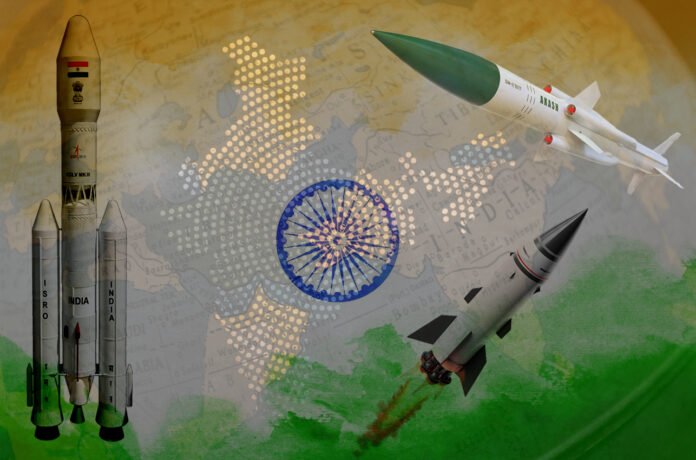in the 1970s, the economist Raj Krishna coined the term ‘Hindu Rate of Growth’ to describe India’s sluggish economic performance, averaging around 3.5% annual GDP growth from the 1950s to the 1980s. The phrase, however, was deeply misleading. It implied that cultural or religious factors were responsible for India’s slow growth, rather than acknowledging the role of the socialist economic policies pursued by successive governments during that period.
In truth, the stagnation had far more to do with the command-and-control economy, excessive regulation (often referred to as the License Raj), protectionist trade policies, and a lack of private sector dynamism than with any inherent characteristic of Indian society or Hindu philosophy. Ironically, it was this very model — championed by socialist economists — that curtailed India’s economic potential for decades.
Fast forward to the present: Under a government widely identified with Hindu nationalist ideals, India has witnessed some of the fastest GDP growth rates in its post-independence history. This period has been marked by liberalisation, infrastructure expansion, digital innovation, and pro-business reforms — policies diametrically opposed to those of the earlier socialist era of Jawaharlal Nehru and Indira Gandhi.
Thus, what was once labeled the Hindu Rate of Growth is being replaced by a new growth narrative — one characterised by innovation, entrepreneurship, and a push for global competitiveness. In a historical twist, it is now a government rooted in Hindu civilizational values that is driving economic modernisation and global integration, challenging the outdated assumptions embedded in the original term.
Cradle of Innovation
India’s evolution into a technology and innovation powerhouse is neither incidental nor recent — it is rooted in millennia of scientific tradition and intellectual excellence. From the breakthroughs of ancient Indians in mathematics, astronomy, and metallurgy to the vibrant innovation ecosystem flourishing today, the country’s story is one of relentless ambition, transformative leadership, and policy-driven progress.
Long before Silicon Valley or Shenzhen, ancient India stood as a beacon of scientific inquiry and technological brilliance. The architectural precision of the Indus Valley Civilisation (2600 – 1900 BCE), including sophisticated drainage systems and urban planning at sites like Mohenjo-Daro and Harappa, represents one of humanity’s earliest expressions of engineering excellence.
Foundational mathematical concepts such as zero, infinity, and decimal notation originated in India, with scholars like Brahmagupta (7th century CE) formalising these ideas. Astronomers like Aryabhata (5th century CE) calculated planetary movements with striking accuracy, predating European advancements by centuries. The Sushruta Samhita (circa 600 BCE) detailed over 300 surgical procedures, laying the groundwork for modern surgery, while metallurgical marvels like the Iron Pillar of Delhi (circa 400 CE), which has resisted corrosion for over 1,600 years, underscore India’s expertise in materials science.
This rich scientific legacy reveals a culture where spirituality and science coexisted, making ancient India not only a philosophical heartland but also a technological trailblazer of its era.
From the breakthroughs of ancient Indians in mathematics, astronomy, and metallurgy to the vibrant innovation ecosystem flourishing today, India’s story is one of relentless ambition, transformative leadership, and policy-driven progress
Post-Independence Industrial Foundations
At independence in 1947, India was primarily agrarian, economically constrained, and technologically nascent. The British Empire had completely stripped India of its wealth and had uprooted its ancient education system. Yet, the seeds of modern innovation were sown early through institutions like the Indian Institutes of Technology, established in the 1950s, and the Indian Space Research Organisation, founded in 1969.
Independent India championed a ‘scientific temper’, prioritising institutions of higher learning and research. The establishment of the Council of Scientific and Industrial Research and the Department of Atomic Energy further laid the groundwork for scientific advancement. However, economic constraints and a state-led industrialisation model limited private-sector innovation. The economic liberalisation of 1991, under Prime Minister PV Narasimha Rao’s watch, dismantled protectionist policies, unlocking India’s innovation potential.
India’s Rise as a Global Services Power
The 1990s marked a turning point. India’s large English-speaking workforce, competitive labour costs, and nascent tech infrastructure propelled the country into the global IT services arena. Companies like Tata Consultancy Services, Infosys, and Wipro emerged as leaders in software outsourcing, positioning India as the world’s ‘back office’.
This transformation was supported by infrastructure initiatives like the Software Technology Parks of India, established in 1991, which provided tax incentives and connectivity for IT firms. Cities like Bengaluru, Hyderabad and Pune evolved into global tech hubs, attracting multinational corporations and fostering a culture of innovation. By the early 2000s, India’s IT sector contributed significantly to GDP, employment and exports, laying the foundation for a knowledge-based economy.
The 1990s marked a turning point. India’s large English-speaking workforce, competitive labour costs, and nascent tech infrastructure propelled the country into the global IT services arena. Companies like Tata Consultancy Services, Infosys, and Wipro emerged as leaders in software outsourcing
Rise of a Tech and Innovation Powerhouse
India today is not merely a service provider — it is an innovation leader and a startup superpower. As the world’s fastest-growing major economy, with GDP projected to reach $7.3 trillion by 2030, India is redefining its economic and technological destiny.
Under the Digital India initiative, launched in 2015, India has become the world’s largest connected democracy with over 800 million internet users. Key innovations like Aadhaar, UPI, and RuPay have revolutionised financial inclusion. With UPI now accepted in countries like Singapore, the UAE, and France, India is not just digitising its economy — it’s exporting its digital infrastructure. These tools have brought millions into the formal financial system, reshaping the future of inclusion and digital empowerment.
Production-Linked Incentive (PLI) Schemes
The PLI schemes, launched in 2020 with an outlay exceeding ₹1.97 lakh crore across 14 strategic sectors, aim to bolster domestic manufacturing and technological self-reliance (Aatmanirbhar Bharat). By 2024, exports under these schemes surpassed ₹5.31 lakh crore, with significant growth in electronics (such as mobile phone manufacturing), pharmaceuticals and telecom products. Companies like Apple and Samsung have expanded production in India, making it a global hub for electronics manufacturing.
Startup India
The Startup India initiative, launched in 2016, has transformed India’s entrepreneurial landscape. From 500 startups in 2016, India now boasts over 1.59 lakh recognised startups, making it the third-largest startup ecosystem globally, according to government data. Over 100 unicorns (startups valued at $1 billion or more) have emerged in sectors like fintech (PhonePe, Paytm), agritech, healthtech, and edtech. The abolition of the angel tax in 2024 has further catalysed investment, attracting venture capital and fostering innovation.
Global Innovation Index
India’s ranking in the Global Innovation Index 2024, published by the World Intellectual Property Organisation, improved to 39th out of 133 economies, up from 81st in 2015. India ranks:
- 1st in Central and South Asia.
- 1st among lower-middle-income countries.
- 4th in WIPO’s Science & Technology Cluster Index, with Mumbai, Delhi, Bengaluru, and Chennai among the top 100 global innovation clusters.
These rankings reflect increased R&D investment, intellectual property creation, and a collaborative ecosystem involving academia, industry, and government.
Under the Digital India initiative, launched in 2015, India has become the world’s largest connected democracy with over 800 million internet users. Key innovations like Aadhaar, UPI, and RuPay have revolutionised financial inclusion
Innovation Trajectory to 2047
By 2047, as India marks 100 years of independence, it aims to become a global leader in digital inclusion, green innovation, and emerging technologies. The vision includes AI-driven advancements in healthcare, agriculture, and education; a surge in startups and job creation; universal digital connectivity; leadership in space exploration; and pioneering sustainable solutions like renewable energy and electric vehicles.
India’s structural transformation is driven by multi-sectoral progress:
Manufacturing: The Make in India initiative, launched in 2014, aims to increase the manufacturing share of GDP to 25% by 2047. Gross Value Added (GVA) in manufacturing is projected to reach $2.7 trillion by 2035, requiring a 16-fold increase, according to NITI Aayog projections.
Services: The services sector contributes 55% to GVA and employs 30% of the workforce, per the Economic Survey 2023–24. The ‘servicification’ of manufacturing, where services like software and logistics enhance industrial output, is a key trend.
Space Technology: ISRO’s cost-effective missions, such as Mangalyaan (2013) and Chandrayaan-3 (2023), have earned global acclaim. Plans for human spaceflight (Gaganyaan) and a potential Indian space station by 2035 position India among advanced spacefaring nations.
Roadblocks
With countries like China and the US have been investing hundreds of billions of dollars in R&D to get an edge in frontier technologies, there is the risk that India could fall behind. Currently, India spends less than 0.7% of its GDP on R&D, well below the global average of 1.8%. According to the World Economic Forum, a sharp increase in R&D funding, especially in advanced technologies like semiconductors, is essential.
Equally important is developing a skilled talent pool through targeted education initiatives, partnerships with global tech firms, and a strong focus on STEM education. Curricula should be updated to include core subjects such as AI, machine learning and data science, while vocational training must align with the demands of the Intelligent Age.
As the world looks to the future, India offers a compelling vision: a nation that honours its past, meets the challenges of the present, and builds a future of innovation, inclusion, and inspiration for all. If all goes well, India can become a $10 trillion economy and realise the PM’s vision of Viksit Bharat 2047
Conclusion: A New Civilisation of Innovation
India’s innovation journey is a powerful narrative of continuity and reinvention. From ancient scientific marvels to space-age ambitions, India has consistently pushed the boundaries of knowledge and capability. The transformation since 2014 — driven by visionary governance, strategic investments, and an empowered population — positions India not only as a global technology leader but as a civilisational force of innovation.
Rooted in the philosophy of “Vikas bhi, Virasat bhi” (development with heritage), India’s model integrates its rich cultural legacy with cutting-edge innovation. As the world looks to the future, India offers a compelling vision: a nation that honors its past, meets the challenges of the present, and builds a future of innovation, inclusion, and inspiration for all. If India plays its cards right, it could easily become a $10 trillion economy and realise the Prime Minister’s vision of Viksit Bharat 2047.
–The writer is a globally cited defence analyst based in New Zealand. The views expressed are of the writer and do not necessarily reflect the views of Raksha Anirveda






